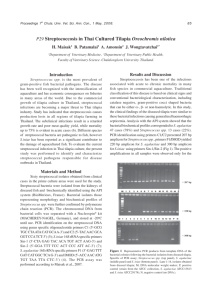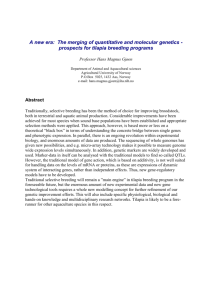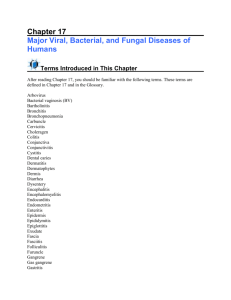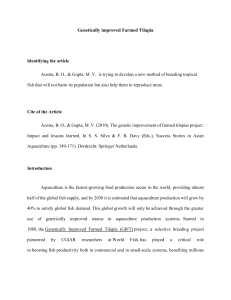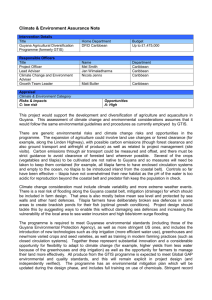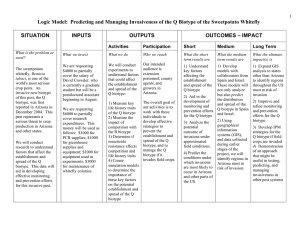ABSTRACT TRANSMITTAL FORM
advertisement
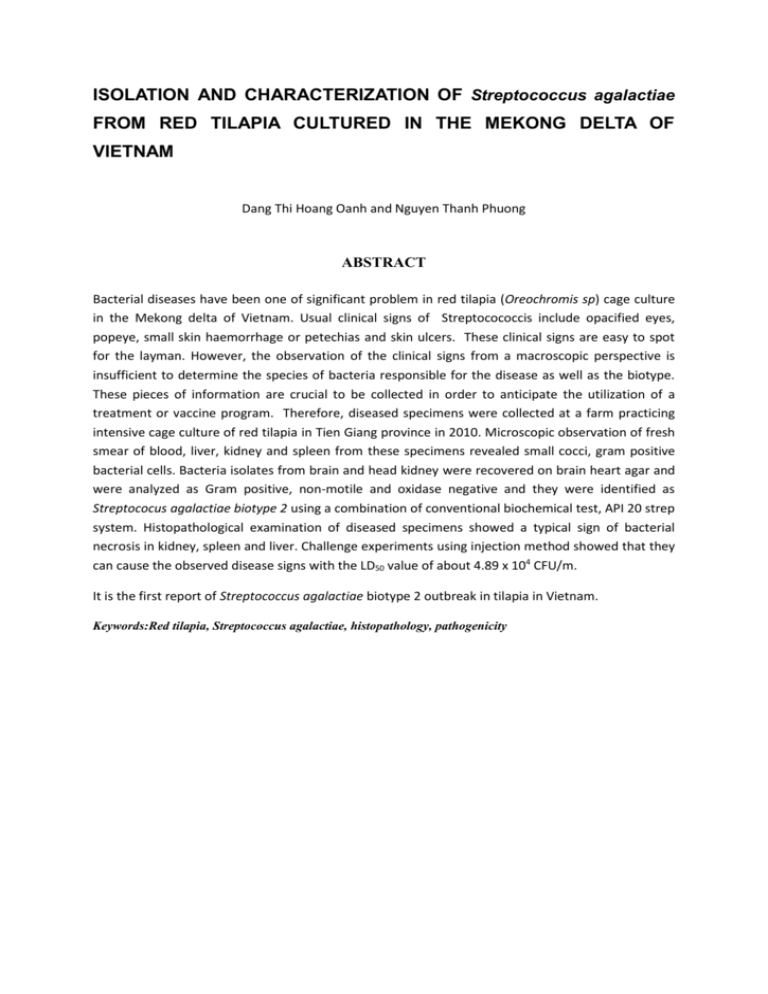
ISOLATION AND CHARACTERIZATION OF Streptococcus agalactiae FROM RED TILAPIA CULTURED IN THE MEKONG DELTA OF VIETNAM Dang Thi Hoang Oanh and Nguyen Thanh Phuong ABSTRACT Bacterial diseases have been one of significant problem in red tilapia (Oreochromis sp) cage culture in the Mekong delta of Vietnam. Usual clinical signs of Streptocococcis include opacified eyes, popeye, small skin haemorrhage or petechias and skin ulcers. These clinical signs are easy to spot for the layman. However, the observation of the clinical signs from a macroscopic perspective is insufficient to determine the species of bacteria responsible for the disease as well as the biotype. These pieces of information are crucial to be collected in order to anticipate the utilization of a treatment or vaccine program. Therefore, diseased specimens were collected at a farm practicing intensive cage culture of red tilapia in Tien Giang province in 2010. Microscopic observation of fresh smear of blood, liver, kidney and spleen from these specimens revealed small cocci, gram positive bacterial cells. Bacteria isolates from brain and head kidney were recovered on brain heart agar and were analyzed as Gram positive, non-motile and oxidase negative and they were identified as Streptococus agalactiae biotype 2 using a combination of conventional biochemical test, API 20 strep system. Histopathological examination of diseased specimens showed a typical sign of bacterial necrosis in kidney, spleen and liver. Challenge experiments using injection method showed that they can cause the observed disease signs with the LD50 value of about 4.89 x 104 CFU/m. It is the first report of Streptococcus agalactiae biotype 2 outbreak in tilapia in Vietnam. Keywords:Red tilapia, Streptococcus agalactiae, histopathology, pathogenicity
